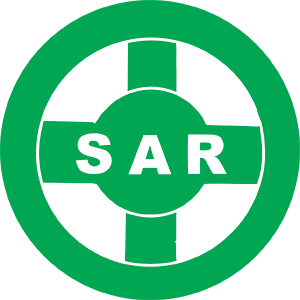Rescue Activities onboard and Disembarking


Rescue activities onboard

What should be done or considered when onboard the vessel:
- Immediately contact the ship’s captain in order to report the rescue team’s presence.
- Ask for, and follow the safety instructions/plans issued by the master of the ship to be boarded
- Avoid staying at places aboard where there is a risk that hazardous gases may flow out, such as sounding plugs, vented drainage tanks, pump room, etc.
- Via the master of the ship, form an idea of the zones in which gas is present. The SRU should always be equipped with breathing apparatus.
- Always use breathing air in confined spaces or in areas where oil is stored or located on the DV
- Have a communication system that enables communication between group members as well as rescue vessels/own ships.
Additional information for the rescue teams can be found in the vessels “Fire Control Plan”. The Fire Control Plan is a mandatory requirement of SOLAS convention described in Regulation 15 of Chapter II. The Fire Control Plan provides us information about fire station on each deck of the ship, on various bulkheads, and in spaces enclosed by “A” class division, “B” class divisions. It also explains us the type of fire detection system and fire fighting systems available on ship. The Fire Control Plan tells us about various fire alarm systems, sprinkler installation, extinguishing appliances, means of escape to different compartments and decks, and ventilation system including particulars of remote operation of dampers and fans. The position of various dampers, their marking, and which fan is for particular compartment or deck is also explained so that required damper and fans can be closed in case of fire.
The graphical symbols used in the Fire Control Plan should be as per fighting equipment symbols set out in IMO Assembly Resolution A.654(16). It is duty of each and every member of ship’s crew to know the meaning of the symbols used in this plan.
The fire plan should be available in the working language of the crew on board, and also in English.
The general arrangement plan should be permanently exhibited for the guidance of ship officer in conspicuous locations such as navigating bridge, engine room and accommodation.
At least one copy of the Fire Control Plan shall be available ashore at the offices of the Company.
Copies of the Fire Control Plan must be provided to each of the members of the fire patrol team in a passenger ship, and also posted at each continuously manned central control station.
A copy of Fire Control Plan should be permanently stored in prominently marked weathertight enclosures outside deckhouse for assistance of shore side fire fighting system in case the ship is in port or in dry-dock.
Also with the permission of Administration, i.e., classification society, the details can be set out in the form of booklet, and a copy of it shall be supplied to each officer onboard. One copy of the same should be available on board and be easily accessible. These plans should be kept up-to-date, and if alterations are made, shall be recorded as soon as possible. The fire plan should be available in the working language of the crew on board, and also in English language.
Disembarking
Once the crew is onboard and the rescue operation onboard has started, it is very important to continuously monitor the disembarking method that has been agreed on. A small and unexpected change in the situation can result in a situation where it isn’t possible to disembark as planned. Always and continuously assess the situation.
